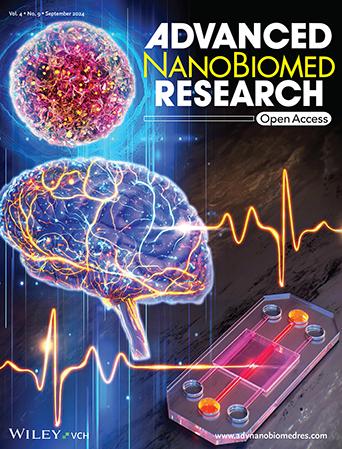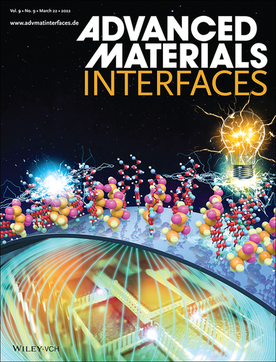Monitoring of Electrophysiological Functions in Brain-on-a-Chip and Brain Organoids
IF 4.4
Q2 ENGINEERING, BIOMEDICAL
引用次数: 0
Abstract
Electrophysiology Measurement
Human avatars like brain-on-a-chip and brain organoids use human-derived cells to replicate brain physiology. This review summarizes the latest methodologies for assessing the electrophysiology of various cell types within brain-on-a-chip and brain organoid models. More details can be found in article 2400052 by Jiyoung Song, Hoon Eui Jeong, Andrew Choi, and Hong Nam Kim.


监测脑芯片和脑器官组织的电生理功能
电生理学测量 片上大脑和类脑器官等人类化身使用源自人类的细胞复制大脑生理学。本综述总结了评估脑芯片和类脑器官模型中各种细胞类型电生理学的最新方法。更多详情请见 Jiyoung Song、Hoon Eui Jeong、Andrew Choi 和 Hong Nam Kim 发表的文章 2400052。
本文章由计算机程序翻译,如有差异,请以英文原文为准。
求助全文
约1分钟内获得全文
求助全文
来源期刊

Advanced Nanobiomed Research
nanomedicine, bioengineering and biomaterials-
CiteScore
5.00
自引率
5.90%
发文量
87
审稿时长
21 weeks
期刊介绍:
Advanced NanoBiomed Research will provide an Open Access home for cutting-edge nanomedicine, bioengineering and biomaterials research aimed at improving human health. The journal will capture a broad spectrum of research from increasingly multi- and interdisciplinary fields of the traditional areas of biomedicine, bioengineering and health-related materials science as well as precision and personalized medicine, drug delivery, and artificial intelligence-driven health science.
The scope of Advanced NanoBiomed Research will cover the following key subject areas:
▪ Nanomedicine and nanotechnology, with applications in drug and gene delivery, diagnostics, theranostics, photothermal and photodynamic therapy and multimodal imaging.
▪ Biomaterials, including hydrogels, 2D materials, biopolymers, composites, biodegradable materials, biohybrids and biomimetics (such as artificial cells, exosomes and extracellular vesicles), as well as all organic and inorganic materials for biomedical applications.
▪ Biointerfaces, such as anti-microbial surfaces and coatings, as well as interfaces for cellular engineering, immunoengineering and 3D cell culture.
▪ Biofabrication including (bio)inks and technologies, towards generation of functional tissues and organs.
▪ Tissue engineering and regenerative medicine, including scaffolds and scaffold-free approaches, for bone, ligament, muscle, skin, neural, cardiac tissue engineering and tissue vascularization.
▪ Devices for healthcare applications, disease modelling and treatment, such as diagnostics, lab-on-a-chip, organs-on-a-chip, bioMEMS, bioelectronics, wearables, actuators, soft robotics, and intelligent drug delivery systems.
with a strong focus on applications of these fields, from bench-to-bedside, for treatment of all diseases and disorders, such as infectious, autoimmune, cardiovascular and metabolic diseases, neurological disorders and cancer; including pharmacology and toxicology studies.
 求助内容:
求助内容: 应助结果提醒方式:
应助结果提醒方式:


